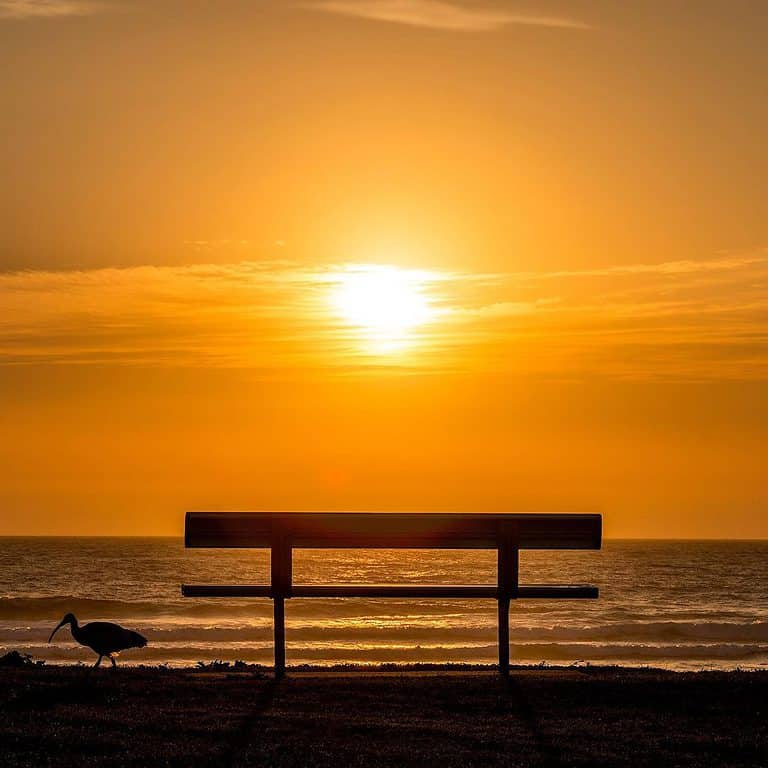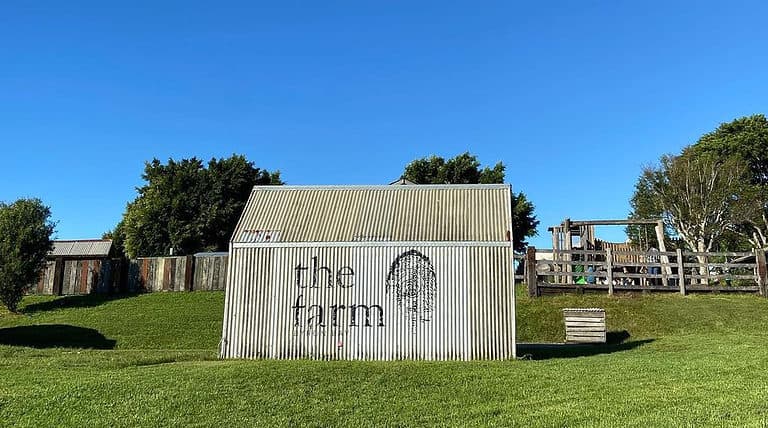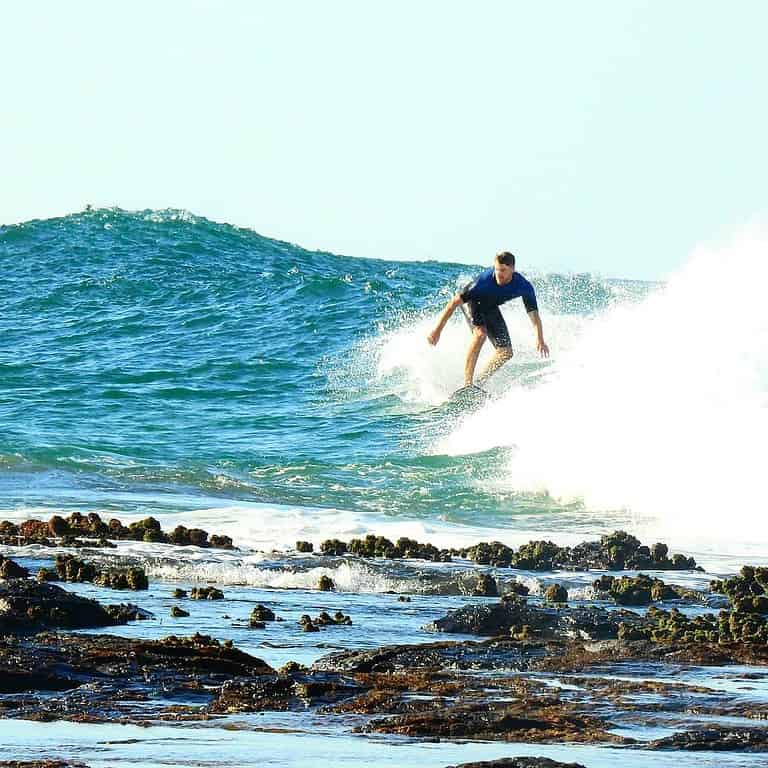Located on the beautiful easterly point of the Australian mainland is the iconic Cape Byron Bay Lighthouse. Serving as a symbol of Byron Bay, the magnificent Victorian-era structure stands tall, offering spectacular views and making itself a prominent feature in postcards and books.
Nestled within the Cape Byron Headland Reserve, the lighthouse shines like a jewel amidst the lush coastal vegetation, bestowing upon its visitors 360-degree breathtaking views of the surrounding landscape.

The Unforgettable Cape Byron Walking Track
Feeling adventurous? Then lace up your walking shoes for a memorable escapade in nature. The Cape Byron Walking Track, stretching across 3.7km, begins in front of the Byron Bay Surf Club. A captivating blend of rainforest, beach, grasslands, and clifftops, this track loops through a diverse range of sceneries.
Ensure to carve out a couple of hours from your schedule to relish the full beauty of this track. From sweeping ocean vistas to the lush hinterland, every view will take your breath away.
The trail also offers great opportunities to spot local wildlife. Keep your eyes peeled for wallabies, bush turkeys, snakes, sea birds, dolphins, and turtles, both on land and in the ocean. If you plan your visit between June and October, you might be lucky enough to see humpback whales on their annual migration.

Access points for the Cape Byron track are plentiful, with parking available at various locations such as the Captain Cook Lookout, Palm Valley, and Wategos Beach for a shorter walk. Or, if you prefer, you can opt to drive up to the lighthouse area. Just remember, parking fees apply per vehicle once you reach the car park.
Cape Byron Lighthouse: What to Expect?
Once you’ve absorbed the splendour of the views and captured enough memories, you can join one of the fascinating tours offered by the Cape Byron Information Centre. From learning about the lighthouse’s history and keepers to hearing stories about shipwrecks and the sea, these tours provide a captivating insight into the Cape Byron Light.
Be sure to stop by the volunteer-run Maritime Museum located in the former lighthouse keeper’s office at the base of the lighthouse. Here, you’ll find intriguing exhibitions about maritime history and can learn more about this iconic Byron Bay landmark.
Afterwards, reward yourself with a delightful snack or drink at the Lighthouse Café. With its cantilevered timber deck, the café offers stunning views of the ocean – a perfect setting for a peaceful break.
Delving into Byron Bay Lighthouse History
Constructed in 1901 by Charles Harding using prefabricated white concrete blocks, the lighthouse holds a special place in Byron Bay’s history. The eight-tonne first-order optical lens, crafted by French physicist Augustin-Jean Fresnel, revolutionized lighthouse lens design.
When the lighthouse was converted to mains electricity in 1956, it became Australia’s most powerful beacon, shedding light on Juan and Julian Rocks towards the north-east.
Today, the Cape Byron Lighthouse and the surrounding headland reserve, associated with the Bundjalung indigenous people of Byron Bay, are must-visit locations for anyone exploring the Byron Bay area.
Byron Bay Lighthouse FAQ
Where is the Cape Byron Lighthouse in Australia?
The lighthouse is situated on Australia’s east coast, in northern New South Wales. The surrounding Cape Byron Headland is the most easterly point of mainland Australia.
Can you go inside Byron Bay lighthouse?
Absolutely! The Cape Byron State Conservation Area is open 24 hours a day, but may close due to poor weather or fire risks. The lawn at Cape Byron Lighthouse is accessible from 8 a.m. to sunset. Additionally, the Maritime Museum, located at the base of the lighthouse, is open daily from 10am to 4pm.
How long is the lighthouse walk Byron Bay?
The lighthouse walk extends approximately 4 km and can take anywhere between 2-3 hours to walk, depending on your fitness level.
Why was the Byron Bay lighthouse built?
The Cape Byron Lighthouse was constructed at the turn of the 20th century to reduce maritime hazards along the perilous stretch of coast. Its design was the brainchild of Charles Harding, who followed the architectural style of his mentor, colonial architect James Barnet.
What’s the address for Cape Byron Lighthouse?
Cape Byron Lighthouse is located on Lighthouse Road, Byron Bay, New South Wales, Australia.
What is the cost for parking at the lighthouse?
Parking is available at the lighthouse. However, please note that a parking fee per vehicle is applicable. For the most accurate and up-to-date information, please check the NSW National Parks official website.
Can I visit the Byron Bay’s main beach on my way to the lighthouse?
Yes, absolutely! Byron Bay’s main beach is a popular stop for visitors heading towards the lighthouse. It’s a great place to relax and enjoy the sun, sand, and surf.
What’s the best time to visit the Cape Byron Lighthouse?
Visitors often prefer sunrise or sunset for the most spectacular views. However, the area offers great views at any time of day. The Maritime Museum at the base of the lighthouse is open from 10am to 4pm daily.
Is there any conservation area near Cape Byron Lighthouse?
Yes, the Cape Byron Lighthouse is part of the Cape Byron State Conservation Area, which is managed by the NSW National Parks. This area includes maritime rainforest, clifftops with heathland and stunning coastal views.
What else can I explore near the lighthouse?
There is plenty to see and do around the Cape Byron Lighthouse. Enjoy the stunning coastal walk to reach the lighthouse, visit the Cape Byron Marine Park, explore the town of Byron Bay, or relax at the nearby Wategos Beach.
What can I learn from the Maritime Museum at the lighthouse?
The museum located in the former lighthouse keeper’s office offers interesting exhibits about maritime history, including information about the lighthouse keepers, shipwrecks, the Bundjalung of Byron Bay, and more.
Are there any facilities for refreshments near the lighthouse?
Yes, after exploring the lighthouse and museum, visitors can stop at the Lighthouse Café, which offers refreshments and snacks along with stunning views of the Pacific Ocean.
Is there a guide or tour available for the Cape Byron Lighthouse?
Yes, the Cape Byron Information Centre provides guided tours where visitors can learn about the history of the lighthouse, hear sea stories, and find out about shipwrecks in the area. It’s an excellent way to enrich your visit to this iconic spot.
Does Cape Byron Lighthouse hold any significance in Australia’s history?
Indeed, the lighthouse was built around the turn of the 20th century to reduce maritime hazards along the dangerous stretch of coast. Furthermore, when converted to mains electricity in 1956, the light became Australia’s most powerful lighthouse, marking an important development in the country’s maritime history.






